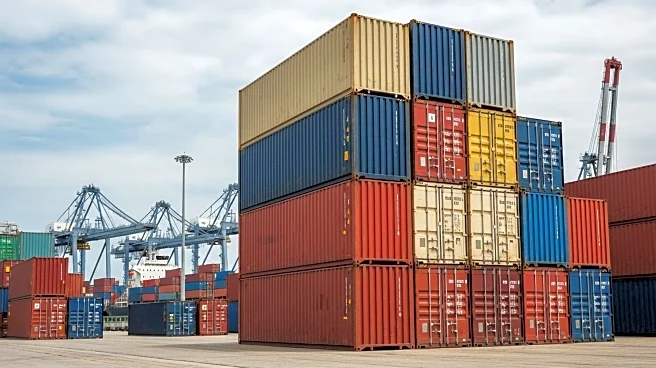What's Happening?
Industry experts are analyzing the long-term impact of tariffs on global supply chains, highlighting a shift towards regionalized trade and nearshoring. The Trump-era tariffs have prompted companies to diversify their sourcing strategies, reducing reliance on single countries like China. This shift is expected to lead to more regional supply chains optimized for resilience, with companies prioritizing supplier diversity over cost. The focus is on building supply chains around flexibility rather than pure efficiency, with technology playing a crucial role in providing deeper flexibility and visibility. Nearshoring, particularly to Mexico, is seen as a more likely beneficiary of tariffs compared to reshoring to the United States.
Why It's Important?
The shift towards regional supply chains and increased technology integration is significant for U.S. industries as it may lead to improved product quality and on-time delivery. Domestic manufacturing is expected to increase, especially for critical products related to national security. This transition could be mildly inflationary but negligible in the long term. Companies investing in technology to boost agility and insight will be better positioned to mitigate risks and optimize costs. The move away from reliance on tariffs-prone markets like China could enhance national and economic resilience.
What's Next?
As tariffs continue to influence global trade, companies are expected to further diversify their supply chains and invest in technology to adapt to changing trade policies. The focus will be on building resilient networks that can withstand political uncertainty and disruptions. Companies may pay premiums for flexibility, and trade flows are likely to shift geographically. The long-term implications include weakened U.S. trade influence and a global pivot towards alternative markets.
Beyond the Headlines
The tariffs have turned supply chains into a geopolitical chessboard, with every move carrying strategic risk. Companies need to stress test sourcing models for tariff exposure and supplier concentration, similar to financial portfolios. The ability to simulate the impact of tariff shifts in real time and coordinate across sourcing, finance, and logistics teams is now a strategic advantage.













